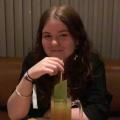Romford is perhaps most famous for its market - and we have taken a look back at vintage photos of Market Place to see just how much it has changed over the years.
From a faded photograph dating back to the 1880s - showing horses and carts amongst the stalls - to a bustling, sun-soaked market day in 1987, here is Market Place's journey through time.
Ladder stalls and an unseen event in the 1880s

At the head of the market stands Laurie Hall, while a stall selling ladders in front of St Edward's Church can been seen on the left hand side.
According to Havering Libraries, the photo captures an unseen event that has drawn the attention of children, adults, and even a policeman, all gathered around a stallholder in a hat (centre bottom).
Cattle Market and Coffee Tavern in 1900

Notable landmarks include the Coffee Tavern, John Castle's Printing Works, and The Globe Coffee and Dining Rooms, with Laurie Hall visible in the background.
READ MORE: Romford and Hornchurch schools remembered in vintage photos
The basket stall is closest to the camera, and McNamara and Sons, known for documenting Romford at the turn of the century, played a key role in capturing these scenes, says Havering Libraries.
Fine Fare supermarket and buses to Brentwood in 1950s

The main road is still open, with three buses making their way through the crowd, including one headed to Brentwood and Shenfield.
On the right are Stones store, the White Swan and Duke of Wellington pubs, Fine Fare supermarket (opened in 1956), and other shops including R.F.R. Parnell the barber and A. Morris and Sons, wholesale grocers, next to the King’s Head.
Changes underway in 1975

Many new buildings can be seen include C&A, Debenhams, the Liberty Shopping Centre, and the Havering Advice Centre, housed in what was formerly S.W. Adams' ironmongers.
Key changes are evident with the absence of Laurie Hall, demolished in 1970, while familiar structures like St Edward's Church and the Rumford Shopping Hall remain as part of the evolving market scene.
A sun-soaked market day in 1987

While individual market stalls are hard to distinguish, a sign advertises "computer specialists" near The Bull, and "Dave’s Jewellers - The Gold Mine" is visible on the right.
Notable landmarks include the former Pig in Pound pub, the Romford Shopping Hall undergoing a facelift, and the towering North House, with St Edward's Church still prominent in the Market Place.









Comments: Our rules
We want our comments to be a lively and valuable part of our community - a place where readers can debate and engage with the most important local issues. The ability to comment on our stories is a privilege, not a right, however, and that privilege may be withdrawn if it is abused or misused.
Please report any comments that break our rules.
Read the rules here